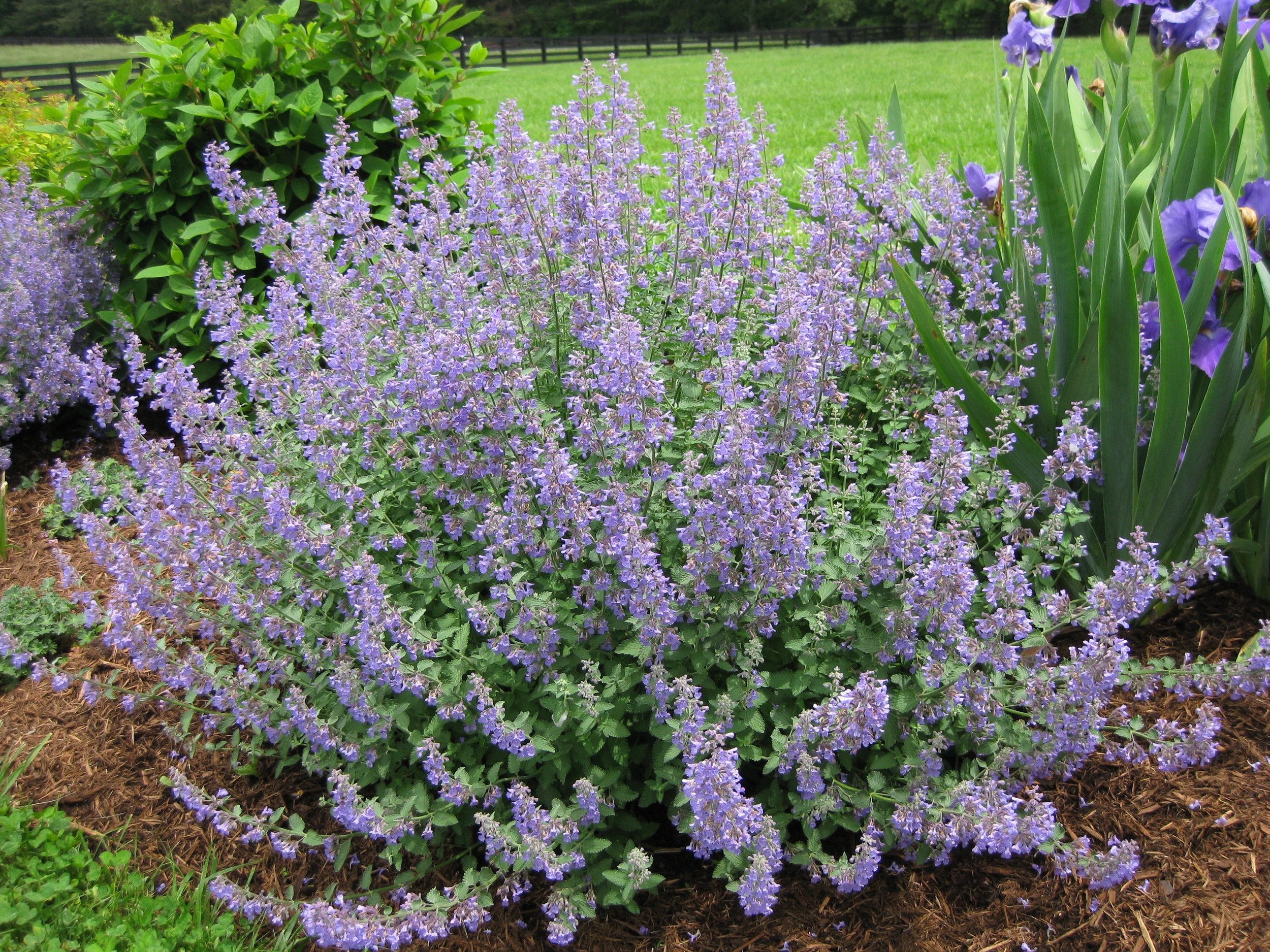 Image 1 of 1
Image 1 of 1


Catmint
Nepeta spp.
Description: Catmint is a hardy, aromatic perennial herb known for its soft, gray-green foliage and spikes of lavender-blue flowers that bloom from late spring through fall. With its mounding growth habit and long-lasting blooms, this easy-to-grow plant is perfect for borders, rock gardens, and pollinator-friendly landscapes. While related to catnip, Catmint has a milder effect on cats and is primarily valued for its ornamental beauty and resilience in the garden.
Wildlife Benefits: Catmint’s nectar-rich flowers attract bees, butterflies, and hummingbirds, making it a valuable addition to pollinator-friendly gardens. Its aromatic foliage also helps deter deer and rabbits.
Medicinal Benefits: Traditionally used in herbal medicine for relaxation and digestive support, Catmint has mild calming properties and can be brewed into teas to promote relaxation and overall wellness.
Native Status: Native to Europe and Asia, Catmint thrives in a variety of climates and grows well in Georgia’s warm conditions.
Pollinator Friendliness: With its extended bloom period and abundant nectar, Catmint provides an excellent food source for pollinators throughout the growing season.
Planting Guidelines:
Height: 12–36 inches (varies by species)
Spacing: 18–24 inches
Sun/Shade: Prefers Full Sun but Tolerates Partial Shade
How to Grow: Catmint thrives in well-drained, sandy, or loamy soil and requires little water once established. Shear back after the first flush of blooms to encourage reblooming and maintain a compact growth habit. It spreads gradually but is non-invasive, making it ideal for naturalized plantings.
Grow Catmint for its fragrant foliage, long-lasting blooms, and pollinator-friendly nature—a drought-tolerant, easy-care perennial that adds beauty and resilience to any garden.
Available in 2.5 inch pots
Nepeta spp.
Description: Catmint is a hardy, aromatic perennial herb known for its soft, gray-green foliage and spikes of lavender-blue flowers that bloom from late spring through fall. With its mounding growth habit and long-lasting blooms, this easy-to-grow plant is perfect for borders, rock gardens, and pollinator-friendly landscapes. While related to catnip, Catmint has a milder effect on cats and is primarily valued for its ornamental beauty and resilience in the garden.
Wildlife Benefits: Catmint’s nectar-rich flowers attract bees, butterflies, and hummingbirds, making it a valuable addition to pollinator-friendly gardens. Its aromatic foliage also helps deter deer and rabbits.
Medicinal Benefits: Traditionally used in herbal medicine for relaxation and digestive support, Catmint has mild calming properties and can be brewed into teas to promote relaxation and overall wellness.
Native Status: Native to Europe and Asia, Catmint thrives in a variety of climates and grows well in Georgia’s warm conditions.
Pollinator Friendliness: With its extended bloom period and abundant nectar, Catmint provides an excellent food source for pollinators throughout the growing season.
Planting Guidelines:
Height: 12–36 inches (varies by species)
Spacing: 18–24 inches
Sun/Shade: Prefers Full Sun but Tolerates Partial Shade
How to Grow: Catmint thrives in well-drained, sandy, or loamy soil and requires little water once established. Shear back after the first flush of blooms to encourage reblooming and maintain a compact growth habit. It spreads gradually but is non-invasive, making it ideal for naturalized plantings.
Grow Catmint for its fragrant foliage, long-lasting blooms, and pollinator-friendly nature—a drought-tolerant, easy-care perennial that adds beauty and resilience to any garden.
Available in 2.5 inch pots
